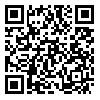Volume 22, Issue 2 (Summer 2021)
jrehab 2021, 22(2): 228-245 |
Back to browse issues page
Download citation:
BibTeX | RIS | EndNote | Medlars | ProCite | Reference Manager | RefWorks
Send citation to:



BibTeX | RIS | EndNote | Medlars | ProCite | Reference Manager | RefWorks
Send citation to:
Mostafaee N, Negahban H, Shaterzadeh Yazdi M J, Goharpey S, Mehravar M, Pirayeh N. Responsiveness of Impairment-based Outcome Measures in Individuals With Anterior Cruciate Ligament Reconstruction Following Physiotherapy. jrehab 2021; 22 (2) :228-245
URL: http://rehabilitationj.uswr.ac.ir/article-1-2860-en.html
URL: http://rehabilitationj.uswr.ac.ir/article-1-2860-en.html
Neda Mostafaee1 

 , Hossein Negahban1
, Hossein Negahban1 

 , Mohammad Jafar Shaterzadeh Yazdi2
, Mohammad Jafar Shaterzadeh Yazdi2 

 , Shahin Goharpey2
, Shahin Goharpey2 

 , Mohammad Mehravar2
, Mohammad Mehravar2 

 , Nahid Pirayeh *3
, Nahid Pirayeh *3 




 , Hossein Negahban1
, Hossein Negahban1 

 , Mohammad Jafar Shaterzadeh Yazdi2
, Mohammad Jafar Shaterzadeh Yazdi2 

 , Shahin Goharpey2
, Shahin Goharpey2 

 , Mohammad Mehravar2
, Mohammad Mehravar2 

 , Nahid Pirayeh *3
, Nahid Pirayeh *3 


1- Department of Physical Therapy, School of Paramedical Sciences, Mashhad University of Medical Sciences, Mashhad, Iran.
2- Musculoskeletal Rehabilitation Research Center, Ahvaz Jundishapur University of Medical Sciences, Ahvaz, Iran.
3- Musculoskeletal Rehabilitation Research Center, Ahvaz Jundishapur University of Medical Sciences, Ahvaz, Iran. ,nahid_pt8287@yahoo.com
2- Musculoskeletal Rehabilitation Research Center, Ahvaz Jundishapur University of Medical Sciences, Ahvaz, Iran.
3- Musculoskeletal Rehabilitation Research Center, Ahvaz Jundishapur University of Medical Sciences, Ahvaz, Iran. ,
Abstract: (4697 Views)
Objective: The primary purpose of physiotherapy in patients with Anterior Cruciate Ligament (ACL) reconstruction is to reduce pain, improve Range of Motion (ROM), muscle strength, and balance after surgery. Thus, therapists need outcome measurement tools with acceptable validity, reproducibility, and responsiveness to assess these changes after the intervention. This study investigates the responsiveness of the tools used to measure pain, ROM, knee muscle strength, and dynamic balance. We also want to determine minimal clinically significant change for these outcomes in patients with ACL reconstruction after physiotherapy.
Materials & Methods: The study participants were 54 young patients with ACL reconstruction evaluated using impairment-based outcome measures of visual analog scale, goniometer, hand-held dynamometer, and Star Excursion Balance Test (SEBT) at baseline (2 weeks after ACL reconstruction ) and 4 weeks after physiotherapy. At the second phase of evaluation, the participants also completed the 7-point global change rating scale. For assessing the responsiveness of the tools, we used the Receiver Operating Characteristics (ROC) curve and correlation analysis
Results: Analyzing the ROC curve showed that the knee extension ROM, quadriceps and hamstring strength, and medial and posteromedial directions under SEBT had acceptable responsiveness (>0.70). The Spearman correlation coefficient between the scores obtained for these outcomes and the score of 7-point global change rating scale were significant in the range of 0.36-0.51. For all the study outcome measurement tools, minimal significant clinical changes were reported.
Conclusion: The results of this study support the responsiveness of goniometer for knee extension ROM, hand-held dynamometer for quadriceps and hamstring strength, and SEBT for dynamic balance at medial and posteromedial directions in the assessment of clinical changes in patients with ACL reconstruction. The reported minimal significant clinical changes for each tool can help the clinicians and researchers to decide on determining the actual significant change in the ACL patient’s clinical conditions after physiotherapy.
Materials & Methods: The study participants were 54 young patients with ACL reconstruction evaluated using impairment-based outcome measures of visual analog scale, goniometer, hand-held dynamometer, and Star Excursion Balance Test (SEBT) at baseline (2 weeks after ACL reconstruction ) and 4 weeks after physiotherapy. At the second phase of evaluation, the participants also completed the 7-point global change rating scale. For assessing the responsiveness of the tools, we used the Receiver Operating Characteristics (ROC) curve and correlation analysis
Results: Analyzing the ROC curve showed that the knee extension ROM, quadriceps and hamstring strength, and medial and posteromedial directions under SEBT had acceptable responsiveness (>0.70). The Spearman correlation coefficient between the scores obtained for these outcomes and the score of 7-point global change rating scale were significant in the range of 0.36-0.51. For all the study outcome measurement tools, minimal significant clinical changes were reported.
Conclusion: The results of this study support the responsiveness of goniometer for knee extension ROM, hand-held dynamometer for quadriceps and hamstring strength, and SEBT for dynamic balance at medial and posteromedial directions in the assessment of clinical changes in patients with ACL reconstruction. The reported minimal significant clinical changes for each tool can help the clinicians and researchers to decide on determining the actual significant change in the ACL patient’s clinical conditions after physiotherapy.
Keywords: Responsiveness, Anterior cruciate Ligament reconstruction, Range of motion, Muscle strength, Balance
Type of Study: Original |
Subject:
Physical Therapy
Received: 8/12/2020 | Accepted: 27/01/2021 | Published: 1/07/2021
Received: 8/12/2020 | Accepted: 27/01/2021 | Published: 1/07/2021
Send email to the article author
| Rights and permissions | |
 |
This work is licensed under a Creative Commons Attribution-NonCommercial 4.0 International License. |





